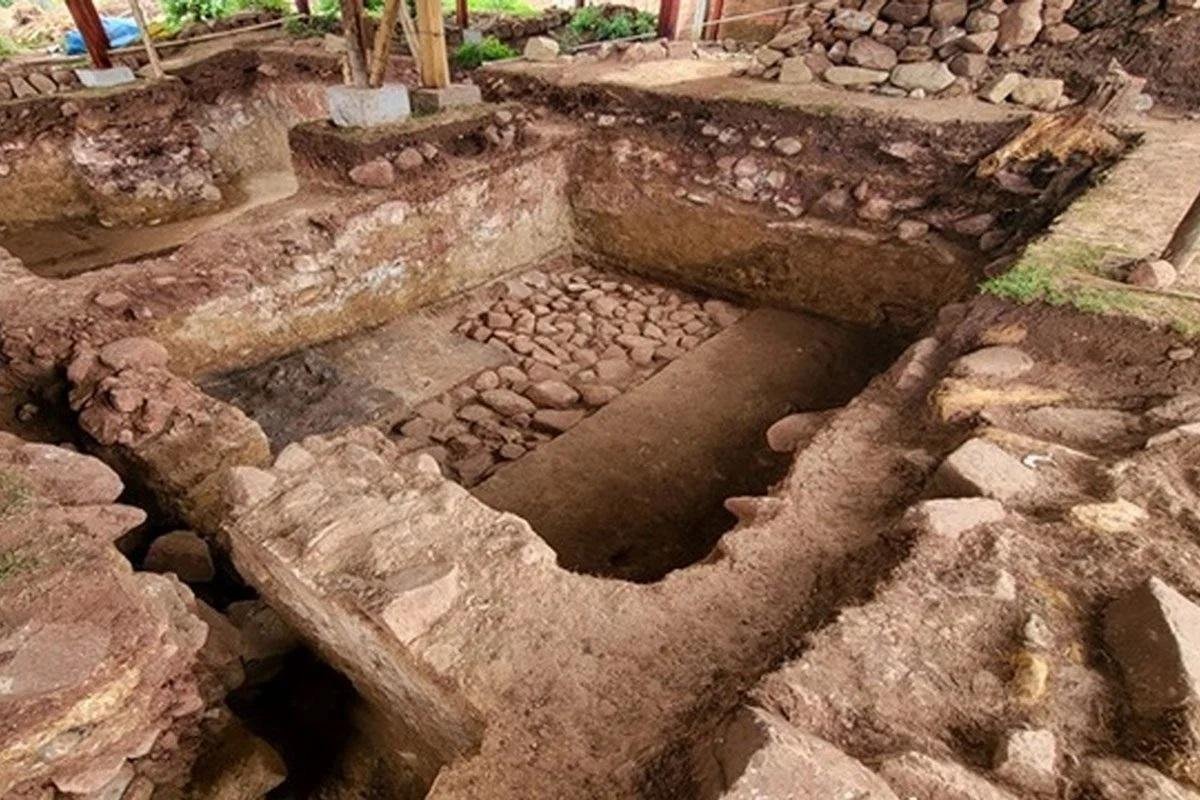Archaeologists in Peru have uncovered an early temple phase at the Rurupa Ceremonial Temple complex, located in the Anco Huallo-Uripa district of the Chincheros province in the Apurímac department.
 Credit: Ministry of Culture of Peru
Credit: Ministry of Culture of Peru
The temple’s origins date back to approximately 3,000 years ago, with evidence suggesting it served as a central hub for ritual activities during the Middle Formative Period (1000 – 800 BCE). Excavations reveal a multi-phase construction, with the initial phase characterized by a rectangular platform and three structures, one of which contained a sacrificial guinea pig on a rectangular altar. What sets this discovery apart is the architectural style, plastered in white and adorned with various colors of pigment, resembling coastal influences uncommon for highland regions.
Dr. Edison Mendoza led the excavation with support from archaeologist Elder Sayago and students from the National University of San Cristóbal de Huamanga. The project, funded by the Anco Huallo-Uripa municipality, aims to preserve the temple’s legacy and facilitate public engagement with Andean history.
The second phase, occurring during the Late Formative Period (800 BCE – 400 BCE), saw significant modifications to the temple complex, including monumentalization and changes in construction techniques. The introduction of larger stone blocks and the construction of a sunken plaza with connecting staircases indicate a shift in ideological and architectural practices, possibly influenced by broader cultural exchanges within Latin America.
The discovery underscores the enduring spiritual and cultural practices prevalent in ancient Andean civilizations, echoing traditions found across Latin America. The temple’s strategic location atop a ceremonial platform, despite its challenging accessibility, attests to its significance as a pilgrimage site.
The whitewashed enclosure within the temple complex serves as tangible evidence of ritualistic practices. As Peru prepares to welcome visitors to the Rurupa temple, it serves as a poignant reminder of the sophisticated societies that thrived in Latin America long before European colonization.





